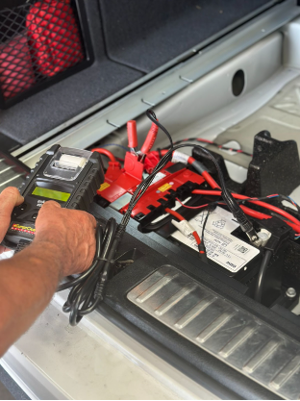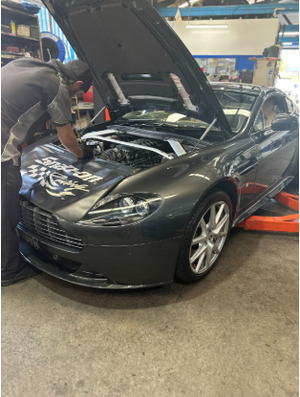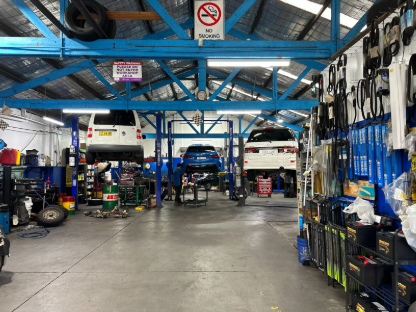
Book your service | Email: mga.repairs@gmail.com | Fax/Call us (02) 9708 4601
Book your service |
Email: mga.repairs@gmail.com |
Fax/Call us (02) 9708 4601
Blogs
Emergency Blue Slip Services: What to Do When You Need a Quick Inspection

Ensuring your vehicle is roadworthy and compliant with local regulations is essential. In New South Wales, Australia, one of the critical certifications for vehicles is the blue slip. But what happens when you need this inspection done in a hurry? This article dives into emergency blue slip services, what you need to know, and how to get it done quickly.
What is a Blue Slip?
A blue slip, officially known as an Authorised Unregistered Vehicle Inspection, is a comprehensive vehicle safety check required for vehicles that have been unregistered for more than three months or are being registered in NSW for the first time. This inspection ensures that your vehicle meets the necessary safety standards and is safe to be on the road.
Why You Might Need a Blue Slip
There are several scenarios where you might need a blue slip:
Re-registering an Unregistered Vehicle: If your vehicle has been off the road for over three months, you’ll need a blue slip before you can legally drive it again.
Transferring Interstate Registration: When moving to NSW from another state, you’ll need a blue slip to register your vehicle.
Importing a Vehicle: Vehicles imported from overseas require a blue slip to ensure they meet Australian safety standards.
Emergency Blue Slip Services
Sometimes, you might find yourself in urgent need of a blue slip. Whether it’s because you’ve sold a car and need to complete the transfer quickly, or you need your vehicle on the road urgently, emergency blue slip services can be a lifesaver.
Finding a Blue Slip Mechanic Near You
When time is of the essence, finding a “blue slip mechanic near me” becomes a priority. Here are some tips to locate a reliable mechanic quickly:
Online Search: Use search engines to find local mechanics who offer blue slip services. Keywords like “blue slip Bankstown” can help narrow down your options.
Reviews and Ratings: Check online reviews and ratings to ensure the mechanic you choose is reputable and efficient.
Local Directories: Utilize local business directories and automotive service listings to find authorized blue slip mechanics.
Preparing for Your Inspection
To expedite the process, it’s essential to prepare your vehicle for the blue slip inspection. Here are some steps to ensure a smooth inspection:
Gather Necessary Documents
Ensure you have all the required documents before heading to the mechanic. These typically include:
Proof of identity (e.g., driver’s license)
Proof of vehicle ownership
Previous registration papers (if applicable)
Import documentation (for imported vehicles)
Perform a Pre-Inspection Check
Before taking your vehicle for the blue slip inspection, perform a basic check to identify and fix any obvious issues. This can help avoid delays and additional costs. Here are some key areas to inspect:
Lights and Indicators: Ensure all lights, including headlights, brake lights, and indicators, are functioning correctly.
Brakes: Check the brake pads, discs, and fluid levels.
Tyres: Inspect the tyre tread and pressure.
Windscreen and Wipers: Ensure the windscreen is free of cracks and the wipers are working effectively.
Fluid Levels: Check engine oil, coolant, and other essential fluids.
What to Expect During the Inspection
Understanding what happens during a blue slip inspection can help you prepare better. The inspection typically covers the following areas:
Vehicle Identification
The mechanic will verify the vehicle’s identification details, including the chassis number, engine number, and registration details.
Safety and Roadworthiness
The primary focus of the blue slip inspection is to ensure the vehicle is safe and roadworthy. This includes checking:
Brakes: Functionality and effectiveness
Steering and Suspension: Condition and performance
Lights and Reflectors: Proper operation and visibility
Tyres: Condition and compliance with legal standards
Seatbelts: Presence and functionality
Body and Chassis: Structural integrity and absence of significant rust
Emissions and Environmental Compliance
The vehicle will also be checked for compliance with environmental regulations, including emissions standards.
What to Do If Your Vehicle Fails the Inspection
If your vehicle fails the blue slip inspection, don’t panic. Here’s what you need to do:
Understand the Issues
The mechanic will provide a detailed report outlining the reasons for the failure. Understand the issues and ask for clarification if needed.
Fix the Problems
Address the identified problems. Depending on the issues, you might need to:
eplace faulty parts
Repair or adjust components
Ensure compliance with safety standards
Re-Inspection
Once the necessary repairs are made, you can schedule a re-inspection. Some mechanics offer a free re-inspection within a certain period, so inquire about this option.
Tips for a Smooth and Quick Blue Slip Process
When you’re in a hurry, these tips can help ensure a smooth and quick blue slip process:
Choose an Authorized Mechanic
Ensure the mechanic you choose is authorized to perform blue slip inspections. This guarantees the validity of your inspection and avoids potential legal issues.
Book an Appointment
Booking an appointment can help avoid long wait times and ensure that the mechanic is available to inspect your vehicle promptly.
Communicate Your Urgency
Let the mechanic know that you need an emergency blue slip service. They may prioritize your inspection or offer expedited services.
Keep Your Vehicle Well-Maintained
Regular vehicle maintenance can prevent unexpected issues during the inspection. Keeping your vehicle in good condition minimizes the risk of failing the blue slip inspection.
Conclusion
Emergency blue slip services can be a lifesaver when you need a quick inspection. By understanding what a blue slip is, preparing your vehicle, and knowing how to find a reliable mechanic, you can ensure a smooth and efficient process. Remember to gather all necessary documents, perform a pre-inspection check, and communicate your urgency to the mechanic. With these tips in mind, you’ll be back on the road in no time, safe and compliant with NSW regulations.
By following the guidelines outlined in this article, you’ll be better prepared to handle any urgent blue slip needs that come your way.
Share this article
Recent Blogs
- All Posts
- Uncategorized



